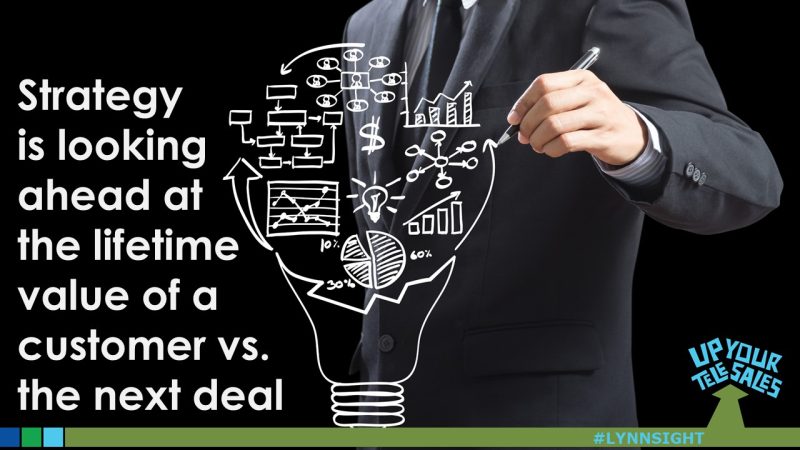“Strategy is looking ahead at the lifetime value of a customer vs. the next deal” #LYNNSIGHT
there is a critical distinction between a short-term mindset and a strategic, long-term vision. Focusing solely on the next deal can certainly bring in immediate revenue, but it’s the broader perspective, one that considers the lifetime value (LTV) of a customer, that lays the foundation for sustained success.
As the inside sales leader, you’re the one who can drive this kind of thinking on your team!
The Long Game: Understanding Customer Lifetime Value
The lifetime value of a customer is a concept that stretches well beyond the initial purchase. It is an estimation of the total worth of a customer to your business over the entirety of their relationship. To put it simply, it’s the difference between enjoying a single cup of coffee versus coffee every day of the week for your entire career.
A strategic approach recognizes that each customer represents not just a single transaction but a potential stream of revenue that can continue to flow for months, years, or even decades. This recognition shifts the focus from the immediacy of closing a sale to the cultivation of long-term relationships.
Building Relationships, Not Just Revenue
Cultivating customer relationships requires a different set of skills and a different approach than simply pursuing a one-time deal. It’s about understanding the customer’s needs, providing value, and creating a positive customer experience at every touchpoint.
When you focus on the relationship, you’re more likely to invest in; customer service, quality, and after-sales support. These areas can turn a one-time buyer into a loyal advocate. Remember, a satisfied customer is the best business strategy of all.
The Power of Retention Over Acquisition
Acquiring new customers is important, but it’s also expensive. Studies show that retaining an existing customer is significantly less costly than acquiring a new one. By focusing on the lifetime value of customers, you’re not only saving money but also building a more reliable revenue base.
Retention strategies might include loyalty programs, personalized communications, or incentives for repeat purchases. These strategies encourage customers to stay, buy more, and even become ambassadors for your brand, referring new customers and thus indirectly contributing to new acquisitions.
Data-Driven Decisions
Understanding and maximizing LTV is a data-driven endeavor. It requires businesses to collect, analyze, and act on customer data. This data can reveal purchase patterns, customer preferences, and potential areas for upsell or cross-sell.
Using this information, a company can tailor its offerings and communications to meet the specific needs and preferences of its customers, increasing satisfaction and the chances of repeat business.
The Synergy of Strategy and Sales
It’s not about choosing LTV over immediate sales; it’s about integrating the two into a cohesive strategy. Each sale is a step toward a more significant, more beneficial customer relationship. A strategic sales team works to close the immediate deal while setting the stage for a long-term, valuable relationship with the customer.
While the allure of the next deal is strong, it is the understanding and nurturing of the customer’s lifetime value that truly drives a business forward. This strategic focus ensures that every deal is not just a transaction but an opportunity to build a lasting relationship that will pay dividends for years to come.

